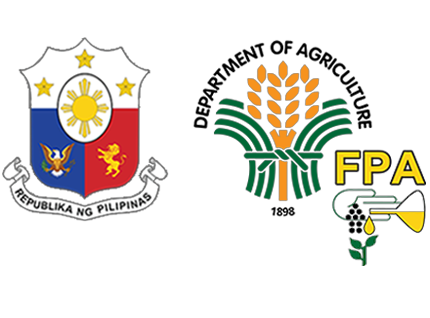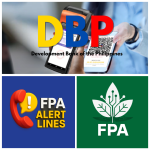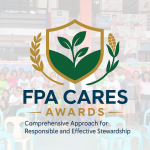
QUEZON CITY, February 02, 2021 – Fertilizer and Pesticide Authority’s (FPA) Director Wilfredo Roldan assures farmers’ subsidy and collaboration with other fertilizer-producing countries are continuing to aid farmers in the recent price hike, through stabilizing supply. In the 33rd Meeting of the Task Group on Food Security with the Department of Agriculture (DA) on February 2, 2022, Director Roldan thoroughly discussed the impact of rising fertilizer prices on the country’s food security.
During the presentation, the FPA Director presented the following reasons for the price hike:
- COVID-19 pandemic that changed the price trends in the global market
- Gas shortage in Europe made domestic fertilizer manufacturers to cut production due to a hike in energy prices
- Increased fertilizer demand in countries like China, the USA, India, Australia, and Brazil
- Fertilizer exports were curtailed due to the complex procedures and strict measures for export cargoes with regards to the implementation of the China Inspection Quarantine (CIQ) policy
- Increased transport and logistic cost
- China, Indonesia, Malaysia prioritize domestic fertilizer requirement
- India’s increased demand for Urea
- Australia’s expansion for crop areas require a 2% increase in fertilizer demand
- South Korea’s need for urea and sourcing out from other countries at a higher price
The above mentioned are global circumstances that affect the movement of fertilizer supply and demand, not just influencing but absolutely dictating local prices. This also roots from the lack of resources of the country to produce its own inorganic fertilizers.
Importance of Fertilizer in Food Security
Director Roldan pointed out the importance of fertilizer inputs on food security as it aids crops to grow healthily by maximizing potential nutrients and replenishing the soil after the harvest. Fertilizer enriches the soil which causes the plants to absorb such nutrients, and in turn, transfer these nutritive elements to its consumers – the animals and the people.
Ways forward
To monitor and stabilize the fertilizer supply, the FPA and its partner agencies continue to come up with several solutions. Actions implemented in 2022 for temporary relief are:
- Continuation of the fertilizer subsidy (Urea/T14) program to farmers. Fertilizer subsidy is under the DA’s Rice Resiliency Project. Farmers and farm laborers who are registered to the DA’s Registry System for Basic Sectors in Agriculture (RSBSA) and who received free rice seeds both inbred and hybrids from the DA are eligible under the department’s fertilizer subsidy program. The subsidy can only be availed via DA’s voucher system where farmers will present their vouchers to get free fertilizer. Registration for the said subsidy is facilitated by the regional agricultural offices;
- Collaborate with the Fertilizer Industry Association of the Philippines (FIAP) and other cooperatives in initiating negotiations with fertilizer-producing countries to secure supply allocations. This will secure fertilizer supply for 2022, expecting stable prices or lull price inflation for the year; and
- Constant monitoring and surveillance of fertilizer stock inventory and local pricing.
For immediate and medium-term solutions:
- Promotion and implementation of the balanced fertilization strategy (BFS) to cut farmers’ dependence on inorganic fertilizer by utilizing a combination of organic and inorganic fertilizers; and
- Capacitate farmers’ federation, cooperatives, and associations to directly import fertilizer.
For medium to long-term solutions, FPA encourages the development of organic fertilizers and other non-traditional inorganic fertilizers (new grades, specialty and controlled release inorganic fertilizers) along with the strengthened information and educational initiatives about farm management with reference to soil fertility mapping of all regions.
Lastly, the long-term solution is to review the viability of government intervention to rehabilitate Philippine Phosphate Fertilizer Corporation (PhilPhos) and other local fertilizer producers. PhilPhos rehabilitation has been ongoing since 2018. And this solution has been proposed and planned since 2021, and is still being processed.
Collaborative efforts from the national office down to the local government, especially the farming and fishing communities are seen absolutely necessary in the improvement of the current felt impacts of global fertilizer price inflation. Further, while the Agency never stops devising solutions to deplete the country’s dependence to fertilizer importation, the FPA seeks for openness and cooperation from the agricultural sector to successfully advance development in the fertilizer industry, and food production. ###
Sources:
Department of Agriculture. (2022, February 2). 33rd Meeting of Task Group on Food Security.
Arcalas, J. (2021, October 25). DA readies short-, long-term ways to cut fertilizer prices. Business Mirror. http://bitly.ws/oh2R
Gomez, E. J. (2021, August 18) DA assures fertilizer subsidy for wet planting season. The Manila Times. http://bitly.ws/oh2W
Fertilizer and Pesticide Authority. (2020) Fertilizer Regulatory Policies and Implementing Guidelines (Blue Book) http://bitly.ws/oh3x
Roldan, W., Mula, M., Lansangan, J., Reyes, R., Layag, I. (2021, November 11) Rising Fertilizer Prices: A Reality. https://bit.ly/3cle6Yr
Fertilizer and Pesticide Authority. (2021, December 1) FPA attends OneDA ManCom Meeting. https://bit.ly/31R3FKh
Written by: Wendycharlene B. Almasen | Published: 3 February 2022
Fertilizer and Pesticide Authority (FPA) Online ISSN: 2815-1674
Published by the FPA Information and Communications Team





